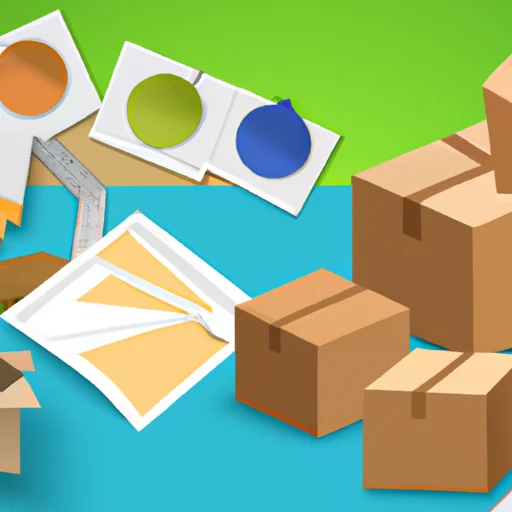Hey there! Today, we want to talk about painting estimating. As homeowners, we all want to spruce up our living spaces every now and then, and painting is a great way to do just that. However, before diving into a painting project, it’s important to have a good understanding of the estimating process. How do we determine the cost of materials, labor, and other expenses? How do we make sure we’re getting a fair price from contractors? These are some of the questions we’ll be exploring in this article.
In this article, we’ll delve into the world of painting estimating and cover all the important considerations. We’ll discuss the factors that can affect the cost of a painting project, such as the size of the area to be painted, the type of paint and finishes chosen, and any additional preparation or repair work needed.
We’ll also provide you with some practical tips on how to obtain accurate estimates from painting contractors and how to compare quotes to ensure you’re getting the best value for your money. So, if you’re planning a painting project in the near future, stay tuned for some useful information that will help you navigate the world of painting estimating!


Table of Contents
Understanding Painting Estimating
As professional painters, we understand the importance of accurate painting estimating. It is the foundation upon which successful projects are built, ensuring profitability and client satisfaction. In this article, we will delve into the definition of painting estimating, its key components, various methods, challenges, best practices, benefits, emerging trends, and common mistakes to avoid. By gaining a comprehensive understanding of painting estimating, we can improve our skills and achieve remarkable results in our work.
Definition of Painting Estimating
Painting estimating is the process of determining the cost and time required to complete a painting project. It involves assessing the surface condition, selecting the appropriate coatings, calculating labor and material costs, factoring in overhead expenses, and determining a profit margin. The end result is a comprehensive estimate that accurately reflects the resources needed to complete the project.
Importance of Painting Estimating
Accurate painting estimating is essential for several reasons. Firstly, it allows us to provide clients with realistic and competitive quotes. By accurately estimating the costs involved, we can avoid overcharging or undercharging our clients, ensuring fairness and transparency in our business practices.
Secondly, painting estimating helps us effectively manage our resources. By accurately determining the labor and material requirements, we can avoid over- or under-stocking, ensuring that we have enough supplies to complete the project without incurring unnecessary expenses.
Finally, accurate painting estimating is crucial for profitability. By carefully calculating the costs involved and factoring in overhead expenses and profit margins, we can ensure that our projects are financially viable and sustainable.
Factors Involved in Painting Estimating
Several factors come into play when estimating the cost of a painting project. These include surface preparation, coating selection, labor costs, material costs, overhead expenses, and profit margin.
Surface preparation involves assessing the condition of the surface to be painted and determining the amount of preparation work required. This can include cleaning, sanding, patching, and priming the surface. The condition of the surface can significantly impact the time and resources needed for the project.
Coating selection is another important factor. Different coatings have varying costs and application requirements. Choosing the right coating for the project is crucial in accurately estimating the material costs.
Labor costs involve the wages or rates paid to the painters and the projected number of hours required to complete the project. Taking into account the complexity of the project, the experience level of the painters, and any additional labor requirements is important in estimating labor costs.
Material costs include the cost of paints, primers, brushes, rollers, and other supplies needed for the painting project. Estimating material costs accurately ensures that we procure the necessary supplies without exceeding the budget.
Overhead expenses are the indirect costs associated with running a painting business. This can include office rent, utilities, insurance, and administrative costs. Allocating a portion of these expenses to each project is important in accurately estimating the overall cost.
Lastly, a profit margin must be factored into the estimate to ensure that the business remains financially viable. Profit margins can vary depending on the industry standards and the specific goals of the business.
Methods for Painting Estimating
When it comes to estimating painting projects, there are several methods that can be employed. These include manual estimating, computerized estimating, and the use of online estimating tools.
Manual Estimating
Manual estimating is a traditional method that involves using pen and paper, or spreadsheets, to calculate the estimated costs. This method allows for a more hands-on approach and provides a clear understanding of the calculations involved. However, it can be time-consuming and prone to human error.
Computerized Estimating
Computerized estimating involves using specialized software or applications to calculate the estimated costs. This method allows for faster and more accurate calculations, as the software can automatically perform complex calculations and generate detailed estimates. It also provides a centralized database for storing and accessing information related to past projects.
Online Estimating Tools
Online estimating tools provide an efficient way to estimate painting projects. These tools typically offer a user-friendly interface, allowing painters to input project details and receive instant estimates. They often include features such as material calculators, cost databases, and customizable templates for generating professional estimates. Online estimating tools streamline the estimating process and provide access to a wealth of information and resources.
Key Components in Painting Estimating
To create accurate painting estimates, several key components must be considered. These components include surface preparation, coating selection, labor costs, material costs, overhead expenses, and profit margin.
Surface Preparation
Proper surface preparation is essential for achieving long-lasting and high-quality paint finishes. It involves assessing the condition of the surface, removing any loose or peeling paint, repairing cracks and imperfections, sanding the surface, and applying a suitable primer. The level of surface preparation required can significantly impact the time and resources needed for the project.
Coating Selection
Choosing the right coating is crucial for achieving the desired paint finish. Different coatings have varying costs, application requirements, and durability. Factors such as the type of surface, the location of the project, and the desired longevity of the paint finish should be considered when selecting the appropriate coating. Estimating material costs accurately involves factoring in the cost of the chosen coatings.
Labor Costs
Labor costs involve the wages or rates paid to the painters and the projected number of hours required to complete the project. Estimating labor costs accurately requires considering factors such as the complexity of the project, the experience level of the painters, and any additional labor requirements. Additionally, it is important to account for factors that may impact labor efficiency, such as limited access to the project site or the need for specialized equipment.
Material Costs
Material costs include the cost of paints, primers, brushes, rollers, and other supplies needed for the painting project. Estimating material costs accurately is crucial to avoid under- or over-stocking. Considerations should be made for the quantity and quality of materials required, as well as any associated delivery or storage costs.
Overhead Expenses
Overhead expenses are the indirect costs associated with running a painting business. These can include office rent, utilities, insurance, and administrative costs. Allocating a portion of these expenses to each project is important in accurately estimating the overall cost. This ensures that overhead expenses are accounted for and incorporated into the pricing structure to maintain profitability.
Profit Margin
Including a profit margin in the estimate is important to ensure the financial viability of the painting business. The profit margin is the amount of money that is added to the total cost to generate a profit. It is typically expressed as a percentage and can vary depending on the industry standards and the specific goals of the business.


Types of Painting Estimates
When it comes to painting estimates, there are several types that can be used depending on the level of detail required. These include detailed estimates, rough estimates, and square footage estimates.
Detailed Estimates
Detailed estimates provide a comprehensive breakdown of the costs involved in a painting project. They include itemized lists of labor and material costs, surface preparation requirements, coating selections, and any additional expenses. Detailed estimates are useful for larger projects or when a high level of accuracy is required.
Rough Estimates
Rough estimates are quick and simplified estimates that provide a general idea of the project cost. They are useful for quickly assessing the feasibility of a project or providing a ballpark figure to clients. Rough estimates may include a range of possible costs to account for potential variations in labor or material requirements.
Square Footage Estimates
Square footage estimates involve calculating the cost per square foot of the project area. This method is commonly used for smaller projects or when the scope of the work is limited to a specific area. Square footage estimates provide a simple and straightforward way to estimate project costs based on the size of the area to be painted.
Challenges in Painting Estimating
Estimating painting projects can present several challenges. Being aware of these challenges and finding ways to overcome them is essential for accurate estimating and project success.
Inaccurate Surface Condition Assessment
Assessing the condition of the surface accurately is crucial for estimating the time and resources needed for surface preparation. Failure to accurately assess the surface condition can result in underestimating the labor and material requirements, leading to cost overruns and delays. Thoroughly inspecting the surface and considering any potential issues or hidden defects is important for accurate estimating.
Inconsistent Material Prices
The prices of materials used in the painting industry can fluctuate due to various factors such as supply and demand, transportation costs, and market conditions. Estimating material costs accurately can be challenging due to these price fluctuations. Regularly tracking and updating material prices is essential for maintaining accurate estimates.
Time-consuming Calculations
Estimating painting projects can involve complex calculations, especially when multiple factors are involved, such as surface area, material costs, labor rates, and overhead expenses. Manual calculations can be time-consuming and prone to errors. Utilizing computerized estimating software or online estimating tools can streamline the calculation process and reduce the chances of errors.
Labor Availability and Productivity
The availability and productivity of labor can impact the estimated project timeline and costs. Factors such as the number of experienced painters available, their efficiency, and any potential disruptions or delays can affect labor costs. Keeping track of labor availability, productivity, and any potential constraints is important for accurate estimating.
Best Practices for Painting Estimating
To achieve accurate and successful painting estimates, several best practices should be followed. These practices can help improve estimating skills and ensure project profitability.
Thorough Site Inspection
Conducting a thorough site inspection is essential for understanding the project requirements and accurately estimating the resources needed. A site inspection allows us to evaluate the condition of the surface, assess any potential obstacles or challenges, and identify any specific client requirements. This information is crucial for creating an accurate estimate.
Accurate Takeoff Measurements
Accurate takeoff measurements involve measuring the surface area to be painted. This can be done manually using measuring tapes or by utilizing digital tools. Accurate measurements are essential for estimating material quantities and labor requirements. Mistakes in measuring can result in over- or underestimating the resources needed for the project.
Incorporating Contingencies
Including contingencies in the estimate is important to account for unforeseen circumstances or changes in project scope. Contingencies should be based on a percentage of the total estimated cost and can be used to cover potential price fluctuations, additional work requirements, or any unexpected expenses that may arise during the project.
Regular Price Tracking and Updating
Monitoring and updating material and labor prices regularly is crucial for accurate estimating. By staying informed about industry trends and price fluctuations, we can ensure that our estimates reflect current market conditions. This helps in avoiding surprises during the project and maintaining profitability.
Clear Communication with Clients
Maintaining clear and open communication with clients throughout the estimating process is essential. Understanding their requirements, addressing any concerns or questions, and providing transparent explanations of the estimated costs fosters trust and confidence. This communication helps in managing client expectations and ensuring satisfaction with the final results.
Benefits of Effective Painting Estimating
Accurate painting estimating offers several benefits for both painters and clients. These benefits include improved cost control, enhanced project management, increased profitability, and client satisfaction.
Improved Cost Control
Accurate estimating allows us to maintain better control over project costs. By accurately calculating the labor, material, and overhead expenses, we can avoid cost overruns and unexpected expenses. This leads to better financial planning and resource allocation, resulting in improved cost control and financial stability.
Enhanced Project Management
Accurate estimating provides a roadmap for successful project management. By understanding the resources required, we can effectively schedule labor, procure materials, and allocate resources. This helps in avoiding delays, improving productivity, and ensuring that the project runs smoothly from start to finish.
Increased Profitability
Effective estimating contributes to increased profitability. By accurately calculating costs and factoring in overhead expenses and profit margins, we can ensure that our projects are financially viable. This enables us to generate profits and reinvest in our business, fueling growth and sustainability.
Client Satisfaction
Accurate estimating helps in meeting client expectations and ensuring satisfaction. By providing realistic and transparent estimates, we build trust and confidence with our clients. This trust leads to positive client experiences, repeat business, and referrals.
Emerging Trends in Painting Estimating
The field of painting estimating is constantly evolving, with new technologies and practices emerging. Some of the emerging trends in painting estimating include the use of artificial intelligence, integration of virtual reality, and mobile estimating apps.
Use of Artificial Intelligence
Artificial intelligence (AI) is revolutionizing many industries, and painting estimating is no exception. AI-powered estimating software can analyze historical data, identify patterns and trends, and generate accurate estimates based on a variety of factors. This technology streamlines the estimating process, improves accuracy, and saves time.
Integration of Virtual Reality
Virtual reality (VR) technology is increasingly being utilized in the painting industry to assist with estimating. VR allows painters to virtually walk through the project site, visualize the space, and identify any potential challenges or requirements. This technology enhances accuracy in estimating, allowing for a more precise assessment of labor, material, and time requirements.
Mobile Estimating Apps
Mobile estimating apps provide painters with the convenience of estimating on the go. These apps allow for easy input of project details, quick calculations, and instant generation of estimates. They also often include features such as material calculators, cost databases, and the ability to store and access project information.
Common Mistakes to Avoid in Painting Estimating
While accurate estimating is crucial, there are common mistakes that painters should avoid. These mistakes can lead to cost overruns, delays, and unsatisfied clients.
Underestimating Surface Preparation
Surface preparation is often a time-consuming and labor-intensive part of a painting project. Underestimating the amount of time and resources needed for surface preparation can lead to delays and additional expenses. Thoroughly evaluating the surface condition and factoring in the required labor and materials for surface preparation is essential for accurate estimating.
Neglecting Material Waste
Material waste is an often overlooked factor in painting estimating. Failure to consider the potential waste or excess material can lead to overestimating material costs. Being mindful of the factors that contribute to material waste, such as spillage, application errors, or touch-ups, helps in accurately estimating material requirements.
Not Considering Labor Productivity
Labor productivity can significantly impact the estimated project timeline and costs. Failure to account for factors that may affect labor efficiency, such as limited access to the project site or the need for specialized equipment, can result in underestimating labor costs. Understanding the specific project requirements and any potential labor constraints is important for accurate estimating.
Conclusion
Accurate estimating is an indispensable aspect of successful painting projects. By understanding the methods, key components, types of estimates, challenges, best practices, benefits, emerging trends, and common mistakes, we can improve our estimating skills and achieve remarkable results.
Investing time and effort into mastering painting estimating techniques is a worthwhile endeavor for any professional in the industry. Accurate estimating ensures fair and transparent pricing, effective resource management, and profitable projects. By continuously refining our estimating skills and staying updated with industry trends, we can deliver exceptional results and exceed client expectations.


